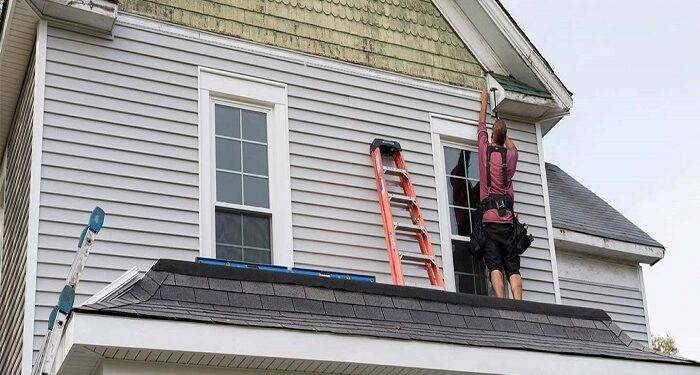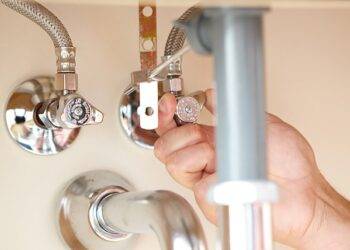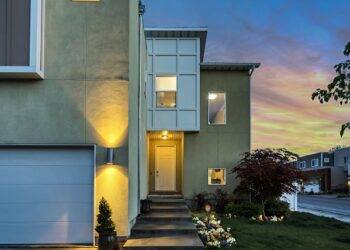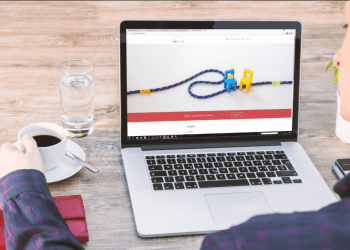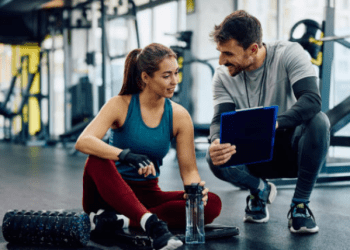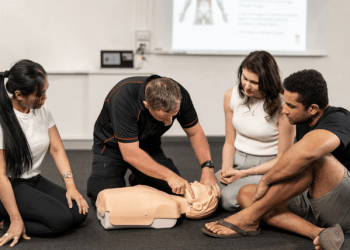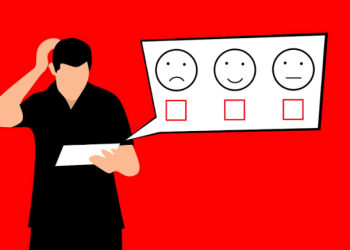Siding – tracing paper of the English word; the translation means “outer skin” and unambiguously indicates the purpose of the material. Siding is the outer part of the hinged facade system, which is also called ventilated.
Appearance
Siding is called panels (slats) of an elongated shape, with a perforated edge and a latch that allows you to connect them in sections of the desired size.
Panels of various textures are on sale, and the colors of siding for house cladding allow you to realize your vision of a beautiful home. Panels with a surface imitating wood (timber, block house, lining), natural stone, plaster, brick are popular.
Features of the use of siding in the cladding of wooden housing
Wooden buildings attract with their spectacular, natural appearance, the preservation of which is a difficult task. To protect wooden walls from destructive dampness and mold, the arrangement of the outer skin helps.
The most common material for sheathing a wooden building is vinyl siding. The most demanded products are pastel colors (as the least fading) and with imitation of natural materials. Professionally installed siding can significantly extend the life of your home. As a frame, it is more practical to use a galvanized profile that is not prone to corrosion and deformation.
Types of material for exterior decoration: advantages and features
Siding is in consistently high demand due to its low cost and versatility. Panels easily solve several problems – decorating, protecting and insulating the structure. The first siding panels (introduced in the 19th century) were wooden. Best siding contractors offer different siding:
- Vinyl
- More than half of buyers make their choice in favor of vinyl siding, due to its characteristics:
- Cheapness.
- Simple installation (light building material) and subsequent maintenance.
- Thermal stability. The material is designed for the range from -50 to +50°C; does not burn in fire, but melts.
- Weather resistant. Excellent protection from wind, rain and snow.
- Wide palette of colors.
The disadvantages include:
- Not as durable as other materials; fades in the sun over time (white – turns yellow).
- Installation subtleties. Panels respond to changes in temperature by expanding or contracting. During installation, this is taken into account, leaving gaps and not fixing the panels too tightly (otherwise the siding may wave or burst).
Acrylic
When choosing which siding is best for cladding a house, you should pay attention to acrylic. This type of cladding panel with a high-strength sandwich structure was developed later than vinyl; thanks to technology, panels of dark, saturated shades appeared. Acrylic products are in constant demand due to the following advantages:
- Sun resistance. 10 times higher than vinyl panels.
- Over time, it does not deform, does not give backlash at the attachment points.
- Easy installation and further maintenance.
The main disadvantage of acrylic panels is the high price. If you are tempted by cheap panels, most likely these are products made in violation of technology or from low-quality materials; in the future, cracking or discoloration should be expected from such a coating. A certificate of quality from the seller will help to avoid such a problem.
Metal
High-quality metal siding consists of several layers. The basis is a steel sheet protected by a zinc, anti-corrosion coating and a primer. A layer of polymer is applied to the front surface, paint or varnish is applied to the back. Thanks to this structure, the profile has excellent performance properties:
- Life time.
- Strength.
- Variety of colors.
The cons are:
- High price.
- The weight. Complicates installation and repair.
- Low thermal insulation.
- Tendency to corrosion in places of chips and scratches.
Fiber cement
Fiber-cement (fiber-reinforced concrete) siding is increasingly used in the arrangement of facades of country houses. The composition of fiber cement panels includes cement, sand, mineral fillers (natural or synthetic) and reinforcing fibers. On the front side there is a layer with the texture of wood or stone.
The positive properties of the material are:
- Wear resistance. The material is used in all climatic zones.
- Durability, dimensional stability and environmental friendliness.
- Good soundproofing.
- Easy image change. The boring color of the fiber cement coating is easy to change by simply repainting it.
The disadvantages include:
- The weight. Fiber cement panels weigh more than metal and polymer; the crate must be strong.
- Care must be taken during transport and installation.
Ceramic
Ceramic siding is a type of fiber cement material. The Japanese came up with the idea of adding clay to the composition of fiber cement or making the front coating ceramic. Keramosiding has valuable qualities:
- Fire resistance. The property is complemented by UV resistance, which allows you to maintain the original appearance of the facade for many decades.
- The material is not afraid of accidental damage and heavy loads (used in seismically active areas).
- Environmental friendliness, ease of care, a large assortment.
There are also disadvantages:
- Price.
- The weight. It does not affect the foundation, but causes difficulties during installation and loading and unloading.
- Difficulty of installation. Ceramics are difficult to cut; without special tools and skills, it bursts easily.
Wood
The history of facade siding began with wood panels. Despite the advantages of natural wood, there are fewer and fewer people who want to use wood siding every year. Modern panels are pressed from wood waste, and the facade requires an annual allocation of funds for treatment with protective mixtures. The material has undoubted advantages:
- Gives the facade a natural, eco-friendly look.
- Provides additional protection against heat loss.
And the undoubted disadvantages:
- Needs periodic care (otherwise, under the influence of atmospheric moisture, it deteriorates, darkens and rots).
- Fire hazardous.
Material selection: what to look for
Knowing what features each type of siding has, you can prioritize. Before choosing siding for a wooden house, you need to remember that:
- Vinyl siding has a significant expansion coefficient and is sensitive to sudden changes in temperature. To prevent it from bursting from frost, installation must be done professionally.
- Wood siding is the least durable and even with proper care will last less than others.
- Metal siding can rust; after impact, a dent remains on the surface.
Conclusion
When choosing siding, buyers are based on the allocated budget, personal preferences and observations. Many country wooden houses are protected by a facade made of this material. Years pass; open wooden buildings, despite careful maintenance, darken and require repair, and only siding is still reliable and defiantly beautiful.

